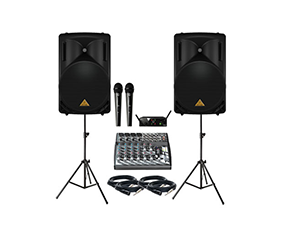|
|
|
|
ZugaPhoto.TV is the first broadband network on the Internet dedicated to photography and one of the most popular photography portals on the Internet. Its original programming ranges from portraits to landscapes to glamour with an emphasis on understanding digital photography. It is pure education, and pure entertainment, delivered by a stable of the world's best photographers.
|
||||||||||||||||||||
|
Make Your Beach Vacation a Photo Safari We have a lot of great photographers at ZugaPhoto.TV and one of my favorites is landscape scenic photographer, Terry Livingstone. Highly sought after, extensively published, and with an eye and sensitivity that we would all like to clone, we presumed upon Terry to write something special for this holiday issue of the RitzCamera.com newsletter. If you would like to see more articles from Terry, stop by and see us at Zuga or buy his book, The Warner Parks: Nashville's Natural Legacy. And if you would like to watch Terry work "in the flesh"--check out our shows at www.ZugaPhoto.TV or catch Terry and many more of our top pro shooters on our interactive DVD How to Take Great Pictures. Watch that DVD for just one hour, and we'll have you shooting just like all our pros. Well, it may take a little bit longer than that, but the DVD is great place to start. Without further delay…here's talented Terry… This time of year, at the unofficial beginning of summer, we start doing a lot more outdoor stuff. And if you're like me, and if your family is like mine, summer means getting close to the water. In particular, it means a trip to the beach. Sure, a vacation at the beach is all about relaxing and having fun, when the only kind of work you want to do, is to work on your tan. I'm with you on that. But the beach is a gorgeous place, full of photo potential. So as long as you're there, why not get some good pictures? It really is possible to do some great nature photography, and vacation with the family, at the same time. Beach scenics As with any landscape or scenic situation, early morning and late afternoon provide the best light for photography. So the first step is to get up early. Yeah, I know - this is not something you want to do on vacation. But trust me, you'll love the early morning light at the beach. (And besides, you can always take a nap later on, in the middle of the day. That's when I like to work on my tan, aka snooze on the beach: when the sun is bright and the light's too harsh for decent photographs.) A lot of people make the mistake of trying to shoot beach scenes in the middle of a bright sunny day. This is a great time of day to be outside, but the worst possible kind of light for landscape or scenic photography. There's a reason most good photos of this kind are produced in the early morning or evening: the light is softer at those times, and more colorful. It's actually worth getting out of bed for. And when the dreaded rain shows up, as it always does sooner or later, that’s a great opportunity for photography. The light during and after a storm can be incredible. For example, on one of our beach trips a thunderstorm moved in at dusk, complete with spectacular streaks of lightening out over the ocean. Having nothing else to do, I set up my camera on a tripod under the roof of our condo’s porch, put the shutter on “B” and locked it open with a cable release. Then I’d cover the front of the lens with my hat till I saw a lightening bolt, and then quickly move my hat away to let the camera “see”. I used a wide angle lens because I never knew exactly where the action would be, and a wide angle let me cover as much sky as possible. Sometimes I’d record multiple lightening bursts on a single frame, sometimes just 1 or 2. There are no rules here, after all. But that’s part of the fun! On another trip it had rained all night, and in fact was still raining when I woke up just before dawn. But I got out of bed, anyway. Fortunately, the rain stopped about the time I got out on the beach. And that sunrise turned out to be magnificent, as the storm clouds filtered the sunlight, turning the scene an incredible shade of red. But no matter when you find the good light, whether at dawn, dusk, or after a storm, it never seems to last very long. So it pays to make the most of it while it lasts. I waited impatiently one morning at the beach for the sun to appear. I had my camera on a tripod, zoom lens aimed at the bright spot on the horizon, and just stood there for what seemed a very long time, till the sun finally rose and I got the shot I wanted. Then I immediately moved back about 30 feet, to the edge of a tidal pool I’d noticed while waiting for the sun. I switched from a telephoto to a wide angle zoom and made shot #2. Then as I was about to walk away, I was intrigued by the patterns in the sand and water at the edge of the pool at my feet: the picture within the picture. Beach wildlife For example, pelicans and herons often congregate in places where food is abundant and easy to catch. So you can get great portraits of these species by visiting a marina or fishing pier. Some of these birds are so habituated to humans that they will literally snatch a fish out of your bucket, if you turn your back for too long. In fact, this is a situation where you might even be able to leave your big SLR camera behind, and take the point and shoot digital with you. Other bird species, like the little Plovers, Sanderlings, Sandpipers, and such, are found on the beach, next to the water, in the middle of the day. And as luck would have it, when on vacation at the beach I tend to be in those same places at that very same time. It works out great. Try this: have your wife and/or kids throw pieces of bread (or anything else remotely resembling food) into the air. Within seconds, seagulls will be swarming and circling around them. These birds are incredibly good at snatching small objects on the wing. They will even take food right out of your kids’ hands. Use a short zoom lens to photograph the event. I like to use my Tamron 28 – 75mm f/2.8 Di lens, framing the white gulls against a blue sky background. Protecting your stuff In short, enjoying a relaxing vacation at the beach, and doing nature photography, are not mutually exclusive activities, by any means. In fact, if you ask me, they go together like… well, like the sea and the shore.
Hope you enjoyed this special feature from Terry Livingstone. Remember, you can see and hear more of Terry at ZugaPhoto.TV and on our great new DVD How to Take Great Pictures. And for those of you who need your portrait fix--we'll be back in the next issue of the RitzCamera.com newsletter with tips on how to make your subjects love their photographs--every time! For those of you who can't wait that long…here's a good book to read - Gary Bernstein's Glamorous World of People Photography. I couldn't resist the free plug. See you next issue. |
||||||||||||||||||||
























































